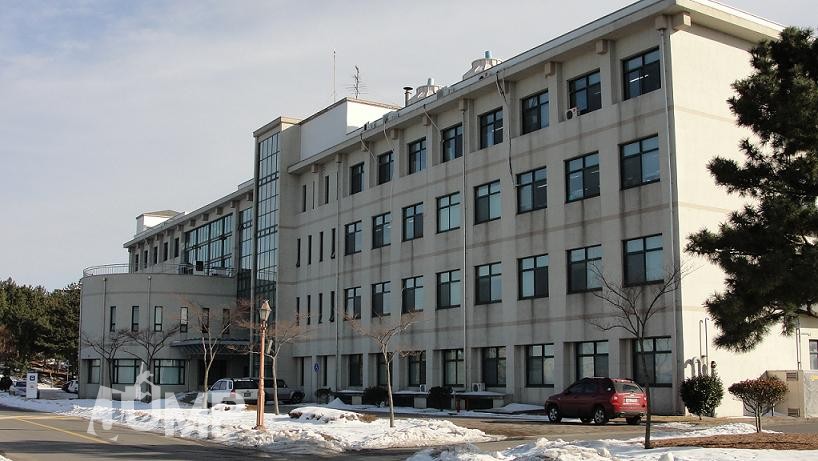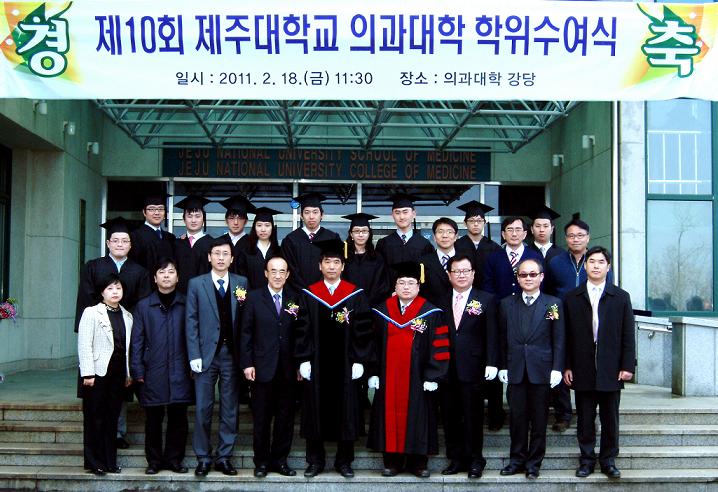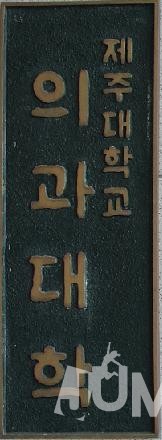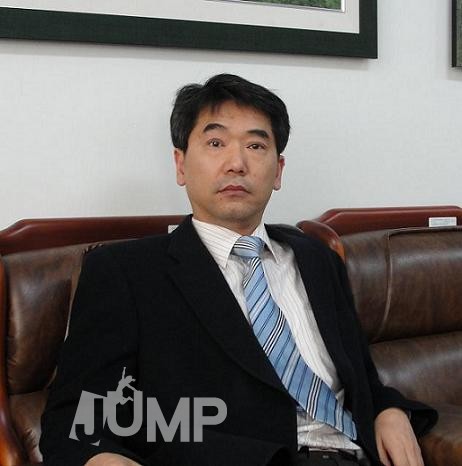Medical school as in college course or graduated course?

In 2010, all the universities that had medical courses in Korea announced their final decision on whether they would have medical college or school. While the decision of other universities were being made public, Jeju National University(JNU) announced that it continues the medical school as it is running now. Students who graduated this February from the medical college are the last for JNU. Now in the year 2011, there will only be medical school students in the campus. There are 31 universities with medical programs in Korea. Among them, 27 are running medical school now, but 22 of them decided to run their programs at the undergraduate courses. And the remaining five universities are maintaining their medical programs at the graduate courses.

What is medical school?

A medical school in Korea is a specialized graduate school for cultivating doctors. This is just like a pharmacy school or a law school, both of which are well established. The main purpose of medical school is to cultivate doctors, but they also educate medical-scientists who are able to do the research. In order to apply, a bachelor's degree is required. Seoul National University(SNU) mentioned to adopt this system in 1995 which is the first in Korea. Then a couple of years later more and more universities followed SNU and announced that they would also have a medical school. The Ministry of Education agreed to their decision. In 1999, it was announced officially that there will be no more medical colleges starting in 2002, and would only medical schools which is graduate schools be exist. Almost every universities that had undergraduate medical programs chose to follow, and only few resisted to have the graduate courses of medical study.
Why was this system created?
So far to become a doctor, a student had to finish 2 years of premedical study and 4 years of medical study at a medical college. Then they had to pass the examination for medical practitioners. If they pass, they usually become general practice doctors which must have a two-year internship to recognize as doctors. However, a medical school is run at a graduate school where it doesn't matter what a person majored in college. They do need to pass the medical exam as well. Through this course, one gets a masters' degree and becomes a doctor or a medical scientist. Moreover, a medical school gives a chance to students who want to study medicine, even though they weren't able to go to medical college. This system also gives a chance to those who studied different major, but later found that studying medicine was a better fit for them. From a doctor's point of view, this system gives a great chance to students from other majors who might be interested in medical study. Finally, by abolishing the premedical course, the excessive competition for entrance exams can be reduced.

What is the problem?
According to reports, there were many discussions from the medical world about keeping the medical school system in the year of 2000. People who agree with the current program want doctors that are able to do clinical studies. But on the other side, the people who disagree are worried about higher school tuition and wasting time.
When the medical schools opened, it became apparent that they were not necessary as much as expected. SNU, where the program first started, announced it would go back to the medical college program. The higher ranked schools followed the SNU's track. After many years of discussion, all the universities that had medical schools at graduate course in Korea made a final decision about whether they would have a medical school at graduate or not. What exactly was the problem?
The major problem with the medical schools was their expensive tuition. Ihwa Womans University was the most expensive costing 9,990,000 won per semester. Ajou University was the next most expensive at 9,950,000 won, followed by Konkuk University at 9,920,000 won. By ranking only national university, JNU was the most expensive one at 6,230,000 won per semester. JNU was followed by Chonbuk National University at 6,210,000 won, and Kyungpook National University at 6,180,000 won. Even though tuition was expensive, students can find a relief if there are enough scholarship opportunities. Scholarships can also be attrative to highly motivated students , but this wasn't the case in reality. Korea University was giving 4% in scholarships which was lowest percentage, followed by Kyunghee University giving 10%, and Hanyang University giving 12%. On average, 21% was given in scholarships.
The classroom environment was also a problem. This was usually the case at schools that had medical college and school together. Medical college and medical school have the mixed classes for their students. So some schools taught college students and graduate students at the same classes. From the graduate students' point of view, it was not fair because they pay more than college students and get the same education. On the other hand, from the undergraduate students' point of view, it was also not fair for them because they only got a bachelor's degree while they studied the same material.
What was the result of discussions?
Out of 31 universities that have medical courses, 27 universities had medical school, and 4 universities had only a medical college. However, some of the ones that had medical school had medical college as well. According to the report about the final decision in 2010, only five out of 27 universities are going to continue the medical school program, and JNU is one of them.
Universities continuing the medical school: JNU, Kangwon National Univ., Gachon Univ., Kunkuk Univ., Dongguk Univ.
JNU's choice
JNU's final decision was made by a vote on October 18th, 2010. Out of 109 professors at the medical school, 99 professors participated in the vote. They voted for the medical school program. Dean of the medical school, professor Seung-cheol Hong gave this response to clarify the decision.

"From now on there are only a few medical schools left so competition for entrance will be steep. Our school, JNU, will not accept students who are not good enough. JNU isn't a top ranking university, so the score for those who enter the medical college is not that high. We are going to accept only much better students through a new process.
Basically it can be concluded that the medical college and medical school programs are the same. However, the universities going back to the medical college program are hoping to get students right out of high school with top scores on their entrance exams. Right now the number of doctors who come from medical college and medical school is about the same in number, and people who go to medical college do have better scores on university entrance examinations, however, people who went to medical school got better scores on the medical practitioners exam.
We are expecting our medical school to make JNU competitive and able to attract superior students, as so few medical schools are left. It will also be able to develop programs for the study of medical science."
At the conclusion of the interview, Professor Hong stated, "It's giving another chance to students who weren't able to go to medical college just because their high school score wasn't good enough. There are students with good scores who are studying really hard to go to medical school. Since students from other majors are studying hard to go to medical school and get better scores, it will be good for the entire school."
As JNU has chosen to run a medical school, we hope it'll be the motivational power necessary to reach the school's goals and expectations, and this will lead to even better quality for the university.

